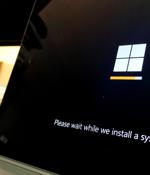Security News

Microsoft has released its first preview build of the Windows Subsystem for Android, allowing you to run Android apps directly on your desktop. Like the Windows Subsystem for Linux, the Windows Subsystem for Android allows you to run native Android apps in a virtualized environment with sound, graphics, and network connectivity.

Installing updates is slower and their size gets incrementally bigger due to the long backlog caused by the two or more updates for each Windows platform released every month. Microsoft increases Windows Update's overall performance by marking earlier updates for expiration as part of a regular evaluation process.

In a short tweet today, exploit broker Zerodium said that it is looking to acquire zero-day exploits for vulnerabilities in three popular virtual private network service providers on the market. Zerodium's current interest is in vulnerabilities affecting Windows clients for NordVPN, ExpressVPN, and SurfShark VPN services.

Microsoft is working on a fix for a known issue impacting Windows 11 customers and causing a prompt for admin credentials before every attempt to print. According to Microsoft, this problem impacts Windows environments where the print clients and print servers are in different time zones.

Microsoft has fixed a known Windows 10 issue causing smartcard authentication to fail when trying to connect using Remote Desktop after installing the cumulative updates released during last month's Patch Tuesday. Microsoft has already rolled out a fix to address this issue via the Known Issue Rollback feature to affected Windows 10 devices.

Windows 10, iOS 15, Google Chrome, Apple Safari, Microsoft Exchange Server, and Ubuntu 20 were successfully broken into using original, never-before-seen exploits at the Tianfu Cup 2021, the fourth edition of the international cybersecurity contest held in the city of Chengdu, China. The Chinese version of Pwn2Own was started in 2018 in the wake of government regulation in the country that barred security researchers from participating in international hacking competitions because of national security concerns.

With Windows 11, Microsoft has finally redesigned the modern Settings app. Thankfully, Windows 11 still comes with the Control Panel and File Explorer-based advanced configuration page called "God Mode" that allows you to easily access all advanced tools, features, and tasks.

282 yesterday with fixes for AMD CPU performance issues and a bug that displayed the Windows 10 taskbar. This build is available to Windows Insiders in the Beta and Release channels and fixes a long list of bugs plaguing users since Windows 11 was released.

Windows 10 users and administrators report widescale network printing issues after installing the KB5006670 cumulative update and other updates released this week. Since installing the KB5006670 update, users are reporting that they cannot print to network print servers, with some users receiving 0x00000709 or 'Element not found' errors when attempting to print.

Microsoft is testing a new method to deliver Windows update improvements starting with Insiders in the Dev Channel running Windows 11 Insider Preview Build 22478. The new feature, dubbed Update Stack Package, will deliver improvements to the update experience outside of major OS updates before monthly or feature Windows updates.